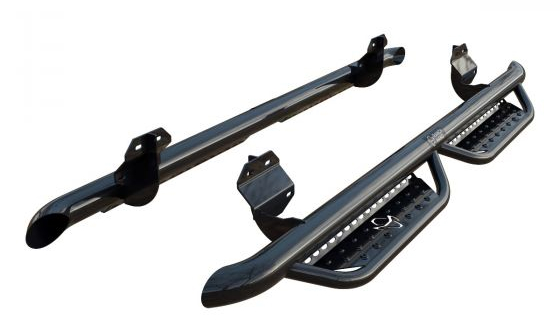Ranch hand bumpers have revolutionized the aftermarket vehicle protection industry by delivering uncompromising durability and functionality that exceeds factory specifications. These heavy-duty protective systems represent a significant advancement in automotive safety equipment, providing truck owners with peace of mind and enhanced vehicle capability across diverse operating environments.
The development of modern ranch hand bumpers reflects decades of engineering refinement and real-world testing. Early protective bumper designs focused primarily on basic impact resistance, but contemporary ranch hand bumpers incorporate sophisticated engineering principles that optimize protection while maintaining vehicle performance characteristics. This evolution has resulted in products that seamlessly integrate with modern vehicle systems while providing superior protection capabilities.
Advanced computer-aided design techniques enable engineers to analyze stress distribution patterns and optimize material placement throughout ranch hand bumper structures. Finite element analysis helps identify potential weakness areas and guides design modifications that enhance overall structural integrity. This scientific approach to bumper development ensures that every component contributes to the overall protection objectives while minimizing unnecessary weight and complexity.
Manufacturing quality control processes for ranch hand bumpers have evolved to incorporate precision measurement techniques and standardized testing protocols. Each bumper undergoes rigorous quality assurance procedures that verify dimensional accuracy, weld quality, and coating adherence. These comprehensive quality control measures ensure consistent performance across all production units.
The selection of appropriate steel grades for ranch hand bumpers involves careful consideration of strength, ductility, and corrosion resistance characteristics. High-strength low-alloy steels provide optimal combinations of impact resistance and formability, allowing manufacturers to create complex geometries that maximize protection while maintaining reasonable weight parameters. The metallurgical properties of these specialized steels contribute significantly to the exceptional performance characteristics that distinguish quality ranch hand bumpers.
Heat treatment processes applied during ranch hand bumper manufacturing help optimize the mechanical properties of steel components. Controlled heating and cooling cycles relieve internal stresses that develop during forming operations while enhancing the material’s impact resistance capabilities. These thermal processing techniques ensure that the finished bumper maintains consistent performance characteristics throughout its service life.
Welding procedures for ranch hand bumpers utilize advanced techniques that create joints stronger than the base materials themselves. Gas metal arc welding processes provide deep penetration and consistent fusion characteristics that result in seamless structural continuity. The welding parameters are carefully controlled to prevent heat-affected zone weakening while ensuring complete joint integrity.
Modern ranch hand bumpers extend protection beyond simple frontal impact scenarios through integrated design approaches that address multiple threat vectors. Side protection elements guard against lateral impacts and provide mounting points for auxiliary equipment. Lower protection bars shield vulnerable underbody components from rock strikes and debris damage during off-road operations.
The integration of lighting systems within ranch hand bumper designs provides enhanced visibility while maintaining the bumper’s protective characteristics. LED lighting arrays can be seamlessly incorporated into the bumper structure, eliminating the need for separate mounting brackets that might compromise structural integrity. These integrated lighting solutions provide superior illumination while maintaining the clean, professional appearance that characterizes quality ranch hand bumpers.
Winch mounting capabilities represent a crucial design consideration for ranch hand bumpers intended for serious off-road applications. The winch mounting system must distribute the substantial loads generated during recovery operations across the vehicle’s frame structure. Proper load distribution prevents localized stress concentrations that could damage the vehicle or compromise the bumper’s protective capabilities.
Ranch hand bumpers undergo extensive testing protocols that simulate real-world impact scenarios and environmental conditions. Pendulum impact testing evaluates the bumper’s ability to absorb and redirect impact energy without transferring excessive forces to the vehicle structure. These controlled impact tests provide quantitative data that validates the bumper’s protective performance across various impact velocities and angles.
Environmental testing exposes ranch hand bumpers to extreme temperature variations, humidity levels, and corrosive conditions that simulate years of service in challenging environments. Salt spray testing evaluates coating durability and corrosion resistance, while thermal cycling tests verify structural integrity under repeated expansion and contraction cycles. These comprehensive testing programs ensure that ranch hand bumpers maintain their performance characteristics throughout extended service periods.
Fatigue testing subjects ranch hand bumpers to repeated loading cycles that simulate the vibration and stress patterns encountered during normal vehicle operation. These tests identify potential failure modes and guide design improvements that enhance long-term reliability. The data gathered during fatigue testing helps establish appropriate safety factors and service life expectations.
Professional installation of ranch hand bumpers requires precise alignment with the vehicle’s frame mounting points to ensure optimal load transfer characteristics. The mounting hardware must be torqued to specific values that provide adequate clamping force without overstressing the frame components. Proper installation procedures preserve the bumper’s engineered performance characteristics while maintaining vehicle structural integrity.
Electrical integration considerations become increasingly important as ranch hand bumpers incorporate more sophisticated lighting and auxiliary systems. Proper wiring techniques and circuit protection help prevent electrical problems that could compromise vehicle operation or safety. Professional installation services address these electrical integration requirements to ensure reliable system operation.
Weight distribution effects must be carefully evaluated during ranch hand bumper installation to maintain proper vehicle balance and handling characteristics. The substantial weight of heavy-duty bumpers can affect steering response, braking performance, and stability characteristics. Professional installers consider these factors and make necessary adjustments to preserve optimal vehicle dynamics.
Ranch hand bumpers provide substantial economic benefits through reduced repair costs and extended vehicle service life. The protection these systems provide often prevents damage that would require expensive repairs to bodywork, cooling systems, and structural components. Over the vehicle’s service life, the cost savings from avoided repairs typically exceed the initial investment in quality bumper protection.
Enhanced vehicle capability resulting from ranch hand bumper installation can improve operational efficiency and expand the range of tasks the vehicle can safely perform. This increased utility often translates to improved productivity and reduced reliance on specialized equipment for challenging applications.

